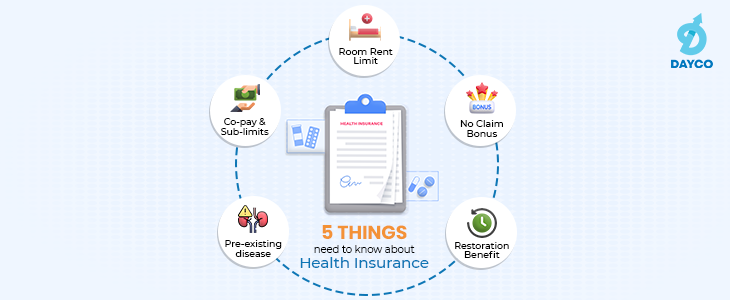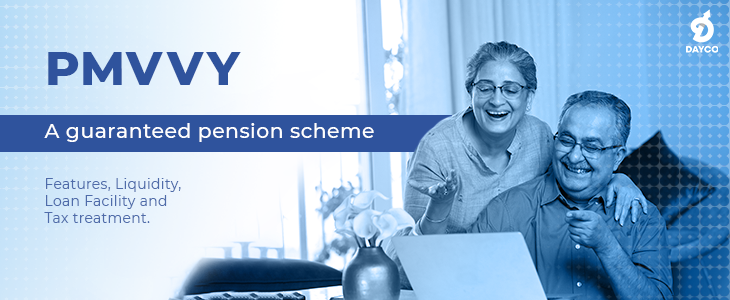Most people start tax-saving investments when the financial year is about to end. Those investments are mostly related to taking the benefit of 80C, on 1.5L per annum. Some people are aware of the additional tax benefit of 50k under section 80CCD(1B), by investing in NPS. Here let us discuss some less known tax-saving ways beyond the benefit of 80C.
1) Are you a Government employee and contributing to General Provident Fund (GPF)? You can contribute from 6% of your salary to 100% as per your own choice and interest on your annual contribution up to 5L will be tax-free. This is because there is no employer contribution in GPF. For other employees, this exemption limit is 2.5L, where there is an equal contribution from the employer.
2) Voluntary contribution to Employee Provident Fund (EPF) is no more fully tax-exempt. Interest on EPF will be taxable above the annual employee contribution of 2.5L for private-sector employees. Still, VPF is attractive as the contribution and the maturity amount remain tax-exempt.
3) If you have exhausted your limit of 80C, and you have the investible fund for your Public Provident Fund (PPF) account, you may prefer contributing so. Just like PF, contribution, interest and maturity amount – all are tax-exempt for PPF too. The difference between VPF and PPF are – (a) the difference in the interest rate and (b) the limit of contribution. PPF pays lesser interest than EPF at present and there is an annual ceiling of contribution in PPF up to 1.5L.
4) If you have an employer contribution to your NPS Tier 1 account, it is beneficial for both the employer and the employee. This contribution, up to 10% of your salary is deductible under section 80CCD(2) for you as an employee, over and above the limit of 80C. The upper ceiling is 7.5L pa, considering all employer contributions including EPF, NPS and Superannuation Fund. This is especially beneficial to the employees of higher income brackets. This deduction is also available under the new tax regime.
5) Are you paying a health insurance premium for a family floater policy and claiming a deduction under 80D? Be aware that 80D provides a benefit of 25K (30K in the case of senior citizens) for self, spouse and children and another 25k/30K worth of benefit for parents if you are paying a health insurance policy premium for them as well.
6) The taxpayers who are taking care of disabled relatives, (or have a self disability), can claim a deduction up to 1.25L per annum under section 80DD (or 80U).
7) If you are paying EMIs for a home loan, and claiming or not claiming the benefit of 80C for the repayment of principal, you should still claim the deduction for the interest paid under income from house properties. This exemption is available to you even if your house is self-occupied and you don’t have any rental income from your house, up to 2L per annum (30K in case of renovation of the existing house) under section 24. If your house is still under construction and will be completed with 5 years of the commencement of your home loan, you will still claim the deduction under section 24 in 5 equal instalments in the following 5 years of the completion of construction. The annual ceiling of section 24 will remain 2L per annum for self-occupied properties.
8) Are you paying EMIs for an education loan for yourself or any of your dependents? The interest on an education loan is deductible under section 80E without any ceiling.
9) If you are paying rent but not eligible to house rent allowance (HRA), or if you are self-employed, you may claim a deduction up to 5K per month under section 80GG. That is, a maximum deduction can be claimed up to 60K per year.
10) Now long term capital gain (LTCG) tax is applicable on equity investment. But this tax is applicable with the grandfathering effect, on long term capital gain above 1L per year and above the closing price on 31 January 2018. So, one can book an LTCG in the equities with a ceiling of 1L in a year, without paying a tax.
If you opt for the old tax regime, under any tax bracket you can avail of the following deductions
| Deduction | UnderSection | Amount |
| StandardDeduction for Salaried Income | Upto 40k(2018-19) / 50K (2019-20) and so on | |
| Maximum 1.5Lcombining 80C, 80CCC, 80CCD(1) | 80CCE | upto Rs.150000 |
| Tuition Fees/5 yr FD (Bank/PO)/ SCSS / NSC/ PFs/ PPF / LI Premium/ ELSS / ULIPs/ Principal of Home Loan / Premium of MFs etc) | 80C | |
| Premium Paidfor Annuity Plan of LI Cos | 80CCC | |
| Employee’scontribution to NPSTier 1 (upto 10% of Salary (in case of salaried) / 20% of GTI(self employed) or 1.5L whichever is lower) | 80CCD(1) | |
| Employer’scontribution to NPS Tier 1 | 80CCD(2) | upto 10% ofEmployee Salary |
| Additionalcontribution to NPS Tier 1 by individual (Or Atal Pension Yojana) | 80CCD(1B) | Rs.50000 |
| GTI<12L,First time investor in Listed Eq / MF for RGESS with 3 yrs Lockin,50% of Rs.50k invested or 25k pa for 3 consecutive yrs | 80CCG | Rs.25000 |
| MedicalInsurance Premium for Family upto 25k incl Preventive health checkup of 5k, +5k if any Sr Citizen in family | 80D(Family) | Rs.25000/- to30000/- |
| MedicalInsurance Premium for Parents upto 25k incl Preventive healthcheck up of 5k, +5k if any Sr Citizen among Parents | 80D(Parents) | Rs.25000/- to30000/- |
| Treatment ofCritical Deceases (out of pocket expenses only – Normal 40k/ SrCitizen 60k/ Super Sr 80k) | 80DDB | Rs.40000/- /60000/- / 80000/- |
| Interest partof the Education Loan taken for self/spouse/children/ anyone whomthe assessee is acting as a legal gurdian, for 8 yrs | 80E | No limit |
| Interestportion of the house property loan | 80EE | Rs.50000 |
| House Rentfor Self Employed / Employed with no HRA | 80GG | Least of 5kper month /(Rent-10%of Total Income)/25% of Total Income |
| Savings Bankinterest (all except Sr Citizen) / Interest on Any Deposits of SrCitizen | 80TTA/80TTB | 10k (u/s80TTA) /50k (u/s 80TTB) |
| DisableDependents / Self Disability | 80DD/80U | 40-80%disability – 75k, >80% disability 125k |
If you have a question, share it in the comments below or DM us or call us – +91 9051052222.
We’ll be happy to answer it.
– Aditi Nundy
















